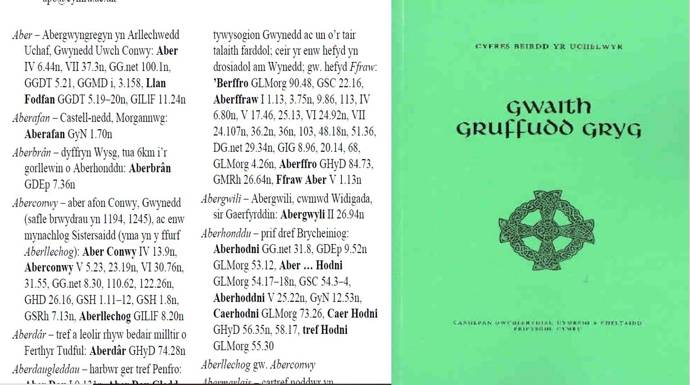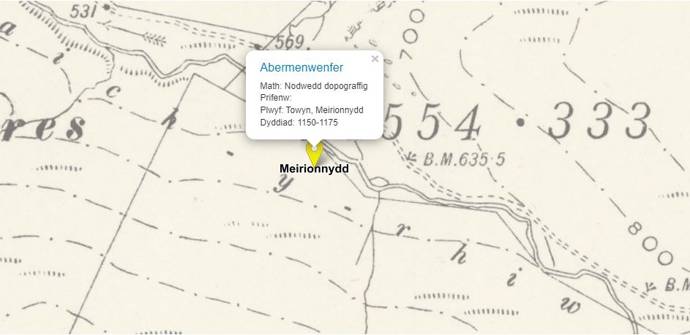Medieval Bardic Names
We've spent the past year adding names to the List from various different sources, and now that the work on some of them is complete, we thought it was time to blog about some of the most interesting ones, to give you a closer look at the work of the List.
The first source is the Mynegai i Enwau Lleoedd y Canu Barddol, which we received through the generosity of Prof. Ann Parry-Owen. The name means index to the place names of bardic poetry, and as it suggests, these names come from the huge corpus of medieval Welsh poetry edited by the Centre for Advanced Welsh and Celtic Studies in Aberystwyth. The poems are split into two series, Canu Beirdd y Tywysogion, the Poets of the Princes, who sang to the rulers of independent Wales, and Canu Beirdd yr Uchelwyr, the Poets of the Nobility, after the loss of independence.

As you'll know if you've been following the List since the beginning, there are already lots of medieval names in it, many of them also provided by the Centre. Most of them are Latin forms of Welsh place names, as well as some Norman and early English ones, reflecting the status of Latin as the language of the Church and of administration, and Anglo-Norman as the language of the Norman conquerors. What makes the names from the Mynegai is the fact that they are all in the Welsh language, thus allowing us to see the development of the names of our towns and villages over the centuries. As well as this, we've got Welsh names for places where only English names survive today, names for places which no longer exist, and names which have changed so much that we weren't able to definitively locate them, such as Abermenwenfer in Tywyn, Meirionydd.

One popular theme in the poetry was to praise the splendour of the patron's house, which of course, necessitated using its name. A large number of these houses are still extant, which means that the names from the Mynegai allow us to trace their history back centuries. A good example of this is Mathafarn in Dyffryn Dyfi near Machynlleth, which dates back to at least c.1317. The poets sang to patrons all across Wales, and in those areas now in England which were Welsh speaking at the time, such as Pengwern around Oswestry, Colunwy around Clun, and Ergyng in western Herefordshire, so we've got medieval names from all around the country. We've probably got some local to you! You'll notice that we've included some of these names from England, if they were close to the border, in order to show that Wales used to be bigger than she is now, and that the Welsh language was spoken everywhere.
Keep an eye on the blog for information about the other sources we've been dealing with recently.
